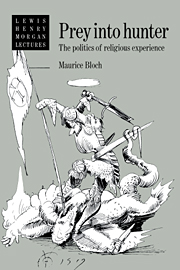3 - Sacrifice
Published online by Cambridge University Press: 15 December 2009
Summary
Chapter 2 began with a discussion of initiation among the Orokaiva. It described how the elders organise a ritual in which the children to be initiated are first associated with pigs, creatures which are seen as very similar to them, and how as pigs the initiates are hunted and symbolically killed by masked men representing ancestral spirits or birds. Then, the initiates are isolated in a dark hut in the forest, where it is said that they, like all those who have gone beyond death, have themselves become a kind of spirit. Finally, the children re-emerge and return from the world of the spirits. They re-emerge associated with the spirits which initially killed them, as hunters and consumers of pigs. However, at this stage the pigs which the initiate will hunt are real pigs. From being conquered and consumed as though they were pigs, the initiates have become conquerors and consumers of pigs and of everything which the pigs evoke: vitality, strength, production, wealth and reproduction.
The initiates' return is accompanied by the whole community, who share in the new-found aggressiveness of the initiates, and all are now predominantly represented as killers of pigs and as eaters of pig meat. As the ritual develops, however, so does the evocation of conquest and soon the killing of pigs is associated with the conquest and killing of people. The pig hunt has come to be a foretaste of warfare and the consumption of enemies.
This matrix of Orokaiva initiation, which is found in many other rituals of initiation, is analogous to the underlying matrix of many of the rituals which have been called sacrifices in anthropological literature.
- Type
- Chapter
- Information
- Prey into HunterThe Politics of Religious Experience, pp. 24 - 45Publisher: Cambridge University PressPrint publication year: 1991

